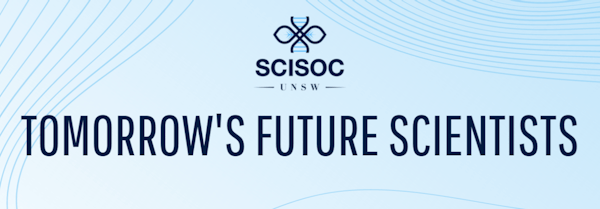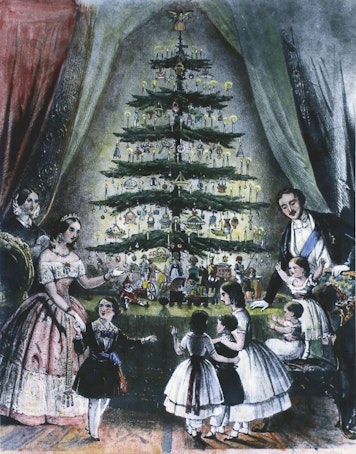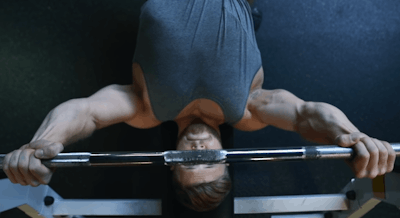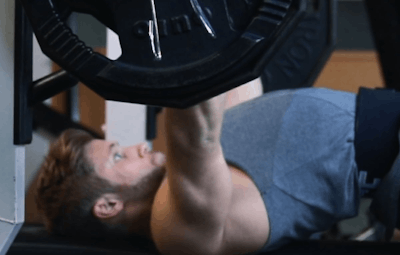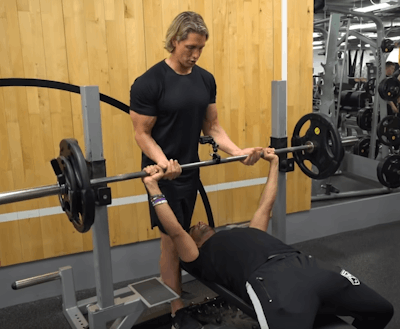Welcome back to PRISM, the SCISOC newsletter! In this week's newsletter, we announce that Camp Leader Applications are open! In our Science News, we explore the origins of Christmas traditions, and for our Fun Corner, we delve into the do's of bench pressing! Finally, congratulations to everyone for finishing their exams! We hope that you can take a well-deserved break and enjoy your summer holiday! |
|
|
UNSW SCISOC Presents: Camp Leader Applications 2022 |
|
|
 |
UNSW SCISOC's anticipated flagship event, SCISOC Camp 2022 needs a set of mighty, committed, and capable leaders to help facilitate the fun and success of camp for all attendees! Important dates to look out for are the following. If you cannot attend any of these dates, please reconsider your application. - Applications open on 12/12, closing on 27/12 with all applicants being considered on a rolling basis
- Camp leader induction falls on 16/1/22, which is a compulsory event and failure to attend will result in your application being rejected
- Camp itself is scheduled for 4/3/22 - 6/3/22
COVID-19 precautions will also be taken and all successful applicants will be informed of any updates on this event. This is a great opportunity for you to gain new experiences, and build your leadership and organisational skills. There are also plenty of new friendships to make and maintain, both new and old with fellow camp leaders and your potential campees so don’t miss out on this chance! More information will be released on our Facebook page so give us a like and keep your eyes peeled! |
 |
|
|
Is Christmas Actually Jesus' Birthday? Christmas is an annual religious and cultural event celebrating the birth of Jesus Christ that is observed by billions of people throughout the world on December 25th. However, contrary to popular belief, Jesus’ birth date was not actually December 25th. The date actually corresponds to the date of the winter solstice on the Roman calendar because they connected Jesus to the Sun through the use of phrases like “Sun of righteousness”. It is also nine months after March 25, the date of the vernal equinox (the moment the Earth's Equator on its axis passes the same plane of the Sun's equator) and a date linked to the conception of Jesus. |
|
|
| The theory that creation started on March 25, the day of the spring equinox, was linked in an anonymous book known as De Pascha Computus, with the conception or birth of Jesus on March 28, the day of the creation of the sun in the Genesis narrative. "O the glorious and wonderful provide-nce of the Lord, that Christ should be born on that day, the precise day, on which the sun was formed, March 28, a Wednesday," reads one translation. |
|
|
Origin of Santa Claus Saint Nicholas was a Greek saint who lived around 280 A.D and was appointed bishop of Myra, a minor Roman city in modern-day Turkey. During the Great Persecution in 303, when Bibles were burned and priests were forced to renounce Christianity or face execution, Nicholas gained a reputation as a fiery, wiry, and tenacious supporter of church orthodoxy. Nicholas opposed these edicts and spent years in jail before the Edict of Milan, issued by the Roman emperor Constantine in 313, put a stop to Christian persecution. |
| |
|
Because he was involved with many miracles and in a well-known tale, three young girls are saved from a life of prostitution when Nicholas secretly delivers three bags of gold to their indebted father, which can be used for their dowries. Nicholas' renown lasted long after his death and veneration for him continue to this day, even though he is not associated with Christmas. He protects a wide range of individuals, from orphans to sailors to convicts. Because he was the patron of so many groups, Nicholas came to prominence among the saints and Santa Claus became recognised as a patron of children and magical gift-bringer by approximately 1200. |
|
|
Origin of the Christmas Tree A Christmas tree decorated with ornaments and lights is a centerpiece of the festive season. Some claim the origin of the Christmas Tree started in Germany, whilst some claim it was introduced by Martin Luther. |
|
|
| Evergreen trees have been used to celebrate winter festivals for thousands of years, long before the advent of Christianity. Pagans in Europe had long worshiped trees in the forest, used evergreen branches to decorate their homes, and brighten their spirits during the winter solstice. The branches were decorated with apples, cookies, nuts, ribbons, etc with the belief linked with harvesting and success in the next year. The use of evergreen trees symbolizes eternal life as a custom of the ancient Egyptians, Chinese, and Hebrews. |
|
|
This developed into the custom of decorating the house and barn with evergreens at the New Year to scare away the devils and of setting up a tree for the birds during Christmas. Christians once again adapted, along with the Church incorporating traditions into the religion by unifying the similar, yet slightly different traditions into the Christmas Tree in the modern day. |
|
|
Origin of Christmas presents Unwrapping Christmas presents is undeniably the most exciting part of the festive season. Gift-giving has its roots extended long before the founding of Christianity, in the festivals of the ancient Romans - the festival of Saturnalia. |
| |
|
This festival took place from the 17th to the 23rd of December, where thanks were given to the bounty provided by the agricultural god Saturn. This was celebrated with a sacrifice and a public banquet, private gift-giving, and a wild atmosphere where social standings were done away with and free speech was embraced. Christianity folded these rituals into Christmas, where gift-giving was redirected to the Three Wise Men, the Magi - Melchior, Caspar, and Balthazar who gave gifts to infant Jesus. As described by the Bible’s New Testament, they journeyed to the location of Jesus’s birth by following a star, presenting him with gifts of gold, frankincense, and myrrh. |
|
|
If you’ve been reading the newsletters for a while now, you would have seen “How-to not die doing deadlifts” which informed you of all there is to know about deadlifting and how to perform it conventionally. To honour this tradition, we will inform you all about another fundamental exercise - the bench press. For starters, the bench press is an upper body exercise that trains primarily the shoulders, chest and triceps though most of the muscles on the body need to be recruited to perform the exercise safely and efficiently. Today, we will discuss the stages of a conventional bench press including the setup, descent and finally press as a general guideline on how to perform it. Please note that these are basic guidelines and things can be adjusted here and there based on personal preferences. |
|
|
Setup Preparing for the bench press is one of the most crucial stages of the lift as it will affect the performance of the lift itself. Lie on the bench such that your eyes align with the bar and place your hands on the bar around shoulder-width apart (can be less or more depending on what feels most comfortable for you). It is important to maintain body tightness throughout the entire lift which can be done via digging your feet into the ground and flexing your quadriceps, retracting your shoulder blades as though you are pinching something between them and then depressing your shoulder blades as well as arching your back slightly, aiming to arch the thoracic region rather than the lower back. When you are ready, lift the bar off of the rack and position the bar so that you have ‘stacked joints’. This means that your wrists, elbows, and shoulders should be aligned such that when looking from the side, it forms a vertical line. Lastly, if possible, have a spotter behind you for the duration of the lift to minimise the chance of injuries especially when you are going for a maximum effort lift. |
| |
|
Descent Now that we’ve figured out how to appropriately set up for the bench press (taking into account what works for us and what doesn’t), let’s talk about the next part of the bench press - the descent. For good practice in most of the main lifts, if you haven’t been doing it already you should start taking a big breath of air into your stomach rather than your lungs preceding the lift. This is commonly referred to as ‘bracing’ and it’s an extremely beneficial technique that will allow for more stability in the abdominal cavity. And, as we know from before, we’re aiming to stay super tight and stable before we bench. While we are maintaining this brace and also keeping our legs tight and activated, we will slowly descend the bar to our body by bending our elbows while also keeping a consistent tempo on the descent. You might realise that different people prefer different tempos when bringing the bar down to their body so it really comes down to what type of speed you prefer and keeps it consistent. On a related note, when we bring the bar down to the body, find a place where you feel comfortable and strong when the bar touches you, and ensure that this is where the bar will come in contact with every successive repetition. Again, this is up to your preference and what works for you, so feel free to experiment with a lighter weight until you find the golden spot. A typical area that is encouraged is the upper abdominal area or the lower half of your chest. This wraps up the descent of the bench press and just keep in mind your wrist throughout the descent AND the press should be fairly neutral and avoid having it bent too far back or too far forward as this will only be counterproductive to an optimal bench press. |
 |
|
|
Press After we’ve successfully let the bar down to come in contact with our body, we now have to focus on the pressing aspect of the bench press. When pushing the bar upwards again, keep the shoulders retracted and depressed, while also now using your lower body to help drive the weight up. To do so, dig your planted feet down into the ground to activate your quadriceps, while also driving them outwards but keeping them planted. To help picture this, think about driving your feet in the direction they’re pointing, but not moving your feet at all but using this technique to help keep your body tight while at the same time helping push the weight up better. This is known as ‘leg drive’, and it’s a commonly overlooked aspect of the bench press which can drastically improve the quality of each repetition. It’s also good to note that when using leg drive, it’s important to keep your butt in contact with the bench as this will prevent any lower back rounding which if not acknowledged can put a lot of strain on it and ultimately lead to injury. Now that we’ve started pushing the weight upwards, try and really focus on extending your triceps rather than pushing the weight with both arms, since this might lead to getting out of position where your shoulders will become rounded and no longer retracted or depressed. To extend your triceps, focus more on straightening your elbows rather than just brute-forcing your lift and using your whole upper body to push the weight upwards. Once your triceps are fully extended and the weight is up, you can consider this one repetition of the bench press and if you’re doing multiple repetitions, follow the same descent and press steps moving forward. One thing to also keep in mind is your ‘bar path’. Think of this as an imaginary line that starts from where the bar came in contact with your body to where you completed your repetition. You might notice that it’s not completely straight, and that’s fine. Most people actually have a bar path that’s more of a diagonal line than a vertically straight line, and this isn’t something to be concerned about because for every person there is typically a preferred bar path that they take, and it’s just good to keep in mind that every repetition of the bench press should have the same bar path. With that said, that completes the bench press and it’s time to experiment and consider what works best for you! |
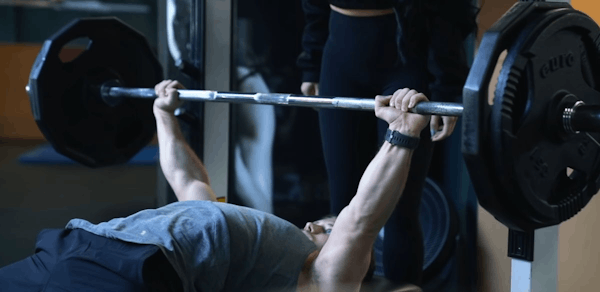 |
|
|
It can be concluded that the bench is a great exercise for developing the upper body and though it appears simple at first glance, to perform it safely and effectively is quite involved. Once you have done the bench press for some time you may find you experience a plateau. When this occurs, you should perform accessory exercises that strengthen the chest, shoulders and triceps that are primary muscles involved in the lift. |
|
|
UNSW Science Society is proud to announce our continued partnership with GradReady through 2021. GradReady provides GAMSAT Preparation courses for anyone looking to pursue Medicine after they graduate.
This process starts earlier than you think, so if you’re studying medical science or just have that passion, check out what they have to offer! |
|
|
| |
